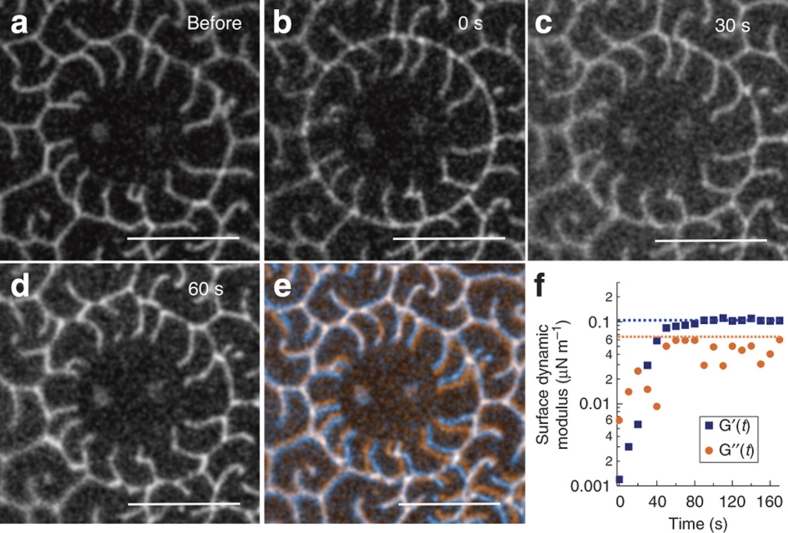Figure 3. A fractured monolayer heals.
(a) Initially, domains around a microbutton form a rough boundary with neighbouring domains. (b) Forcing a large-amplitude rotation smoothes the boundary to a nearly circular slip line, reduces the linear viscoelastic response 20- to 100-fold (f) and eliminates the elastic response. (c, d) Line tension progressively roughens the slip line, with an accompanying increase in surface shear modulus (f). (e) Overlaying initial (red) and final (blue, t=60 s) images reveals the domain structure has healed almost completely, highlighting a remarkably persistent memory (scale bar, 20 μm).

